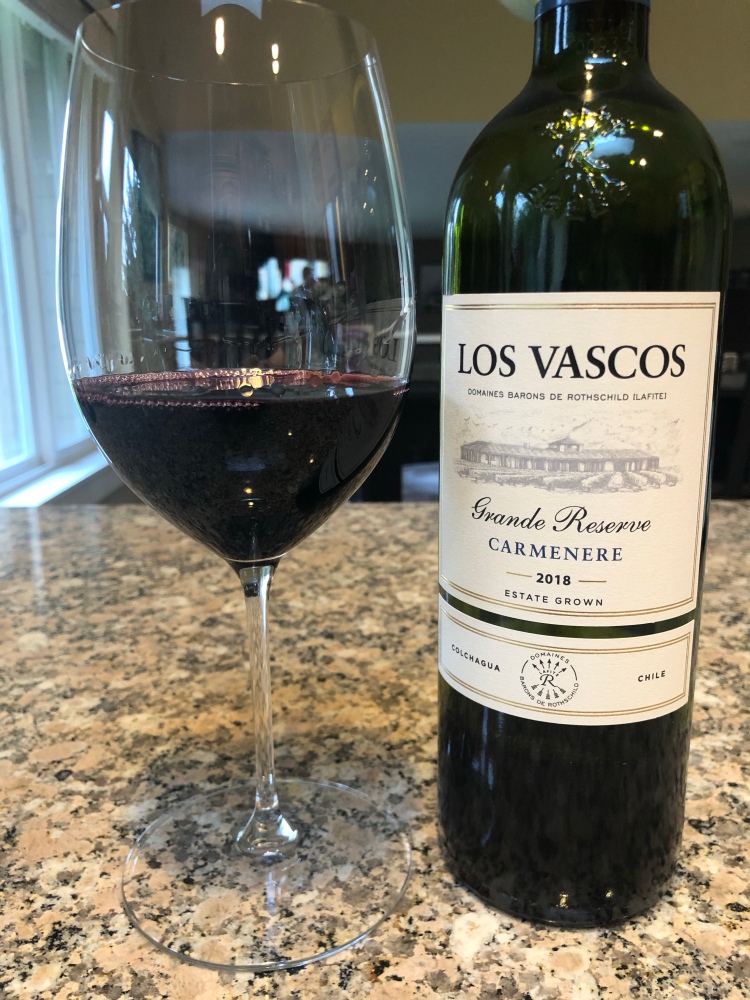
This week, I selected Carmènére (kahr-meh-NEHR), a red wine grape that originated in the Bordeaux region of France but didn’t thrive like more notable varieties, such as Merlot and Cabernet Sauvignon. In the mid 19th century, a bout of phylloxera (an insect that attacks the roots of wine plants) hit Europe and destroyed virtually all of the French grape vines. It was believed Carmènére had become extinct from this infestation. Just prior to this, a few clippings of Carmènére had been imported into Chile, along with some Merlot. As a result of the similarities between Merlot and Carmènére, it took DNA typing to discover the variety was no longer extinct and it was different from Merlot. This didn’t occur until 1994. Following this determination, and with other signifcant advancements, the number of wineries in Chile increased almost 6 fold between 1995 and 2005. In addition to Carmènére, Chile also produces Cabernet Sauvignon, Merlot, Sauvignon Blanc, Pinot Noir, and Chardonnay. Some provide a great value compared to counterparts from the US or France.
In my shopping for this week’s wine, I looked through my local wine shop and found a bottle produced by Los Vascos. The reason I selected this particular wine is because it is owned by the Rothschild family. If you are new to wine, Lafite-Rothschild is the one of the preeminent names of wine lore. Baron James Rothschild, of the Rothschild family banking fame, purchased the Chateau Lafite property in 1864. The property had been producing wine since the 13th century and had become renowned because of aficionados such as Thomas Jefferson taking a fondness. The chateau has been passed down from each generation to the next ever since. The company is now overseen by Domaines Barons de Rothschild (DBR), headed by Baron Eric Rothschild. As part of a global expansion, DBR purchased the Los Vascos property in the Colchagua region of Central Chile in 1988. This acquisition marked the first French wine holding in Chile. It also brought updated viticulture (wine cultivation) and winemaking techniques and technology to the country, which lead to markedly improved wine quality.

The Carmènére bottle poured an inky, deep ruby wine into the glass and left faintly dyed legs on the sides of the glass as I swirled it. When I lifted the goblet to my nose, I noted smells of baked blackberries, blueberry jam, blackberry bramble, black plums, black currants, and vanilla. Once I finally got a sip, this dry wine had a significant level of acidity and tannins while feeling luscious on the palate. It tastes of those same baked blackberries, black plums, blackberry bramble, and added toasted oak as well as its telltale herbaceous quality. Carmènére is noted for having obvious hints of green bell pepper (which can be pungent if the wine grapes were under ripe at harvest). This trait is the reason I have selected to pair this bottle with steak fajitas. It is also what makes this red wine very vegetable friendly. It would be beautiful with a pasta dish containing roasted veggies and tomato sauce. Overall, this bottle was definitely worth the 30 minute drive to pick it up! Los Vascos Carmènére is a wonderful example of what this varietal is supposed to encapsulate.
-TheLooseTannin